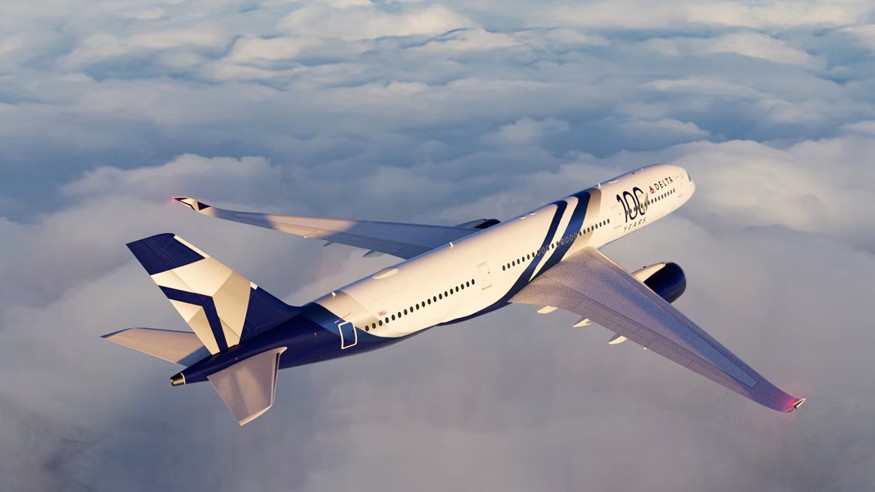
A Delta Airlines flight travelling from Salt Lake City to Amsterdam plunged into turmoil mid‑air on Wednesday evening after encountering severe turbulence, leaving 25 passengers injured.
As tray carts and passengers were hurled against the cabin ceiling, 25 people on board were injured in the shaky flight. The plane made an emergency landing in Minneapolis, where the airline's staff rushed the wounded to the hospital.
According to a Delta Airlines spokesperson, the aircraft landed safely in Minneapolis-St. Paul at about 7:45 pm local time. The injured included 18 passengers and seven crew members who were taken to hospitals for assessment and care.
Severe Turbulence Strikes at Cruise Altitude
Flight DL56 – an Airbus A330‑900 carrying 275 passengers and 13 crew – diverted to Minneapolis–Saint Paul International Airport roughly two hours into its nine‑hour journey after what Delta described as 'significant turbulence' over Wyoming, at cruising altitude of about 38,000 ft. The aircraft descended rapidly to around 35,775 ft in just ninety seconds.
#BREAKING Video from MSP Airport Live stream shows the moment when Delta Airlines flight 56 landed at MSP after experiencing turbulence resulting in 25 passengers injured. pic.twitter.com/RxNWsImgDJ
— Tony Perez (@Tony_MNNews) July 31, 2025
According to one passenger, Leann Clement-Nash, who spoke with ABC News, some individuals aboard the Salt Lake City to Amsterdam flight were not wearing their seat belts and were propelled around the cabin.
Severe turbulence on a Delta Airlines flight headed to Amsterdam sent 25 people to hospitals and forced the plane into an emergency landing in Minneapolis, CBS News' @krisvancleave reports. Passengers aboard the flight from Salt Lake City who weren’t wearing seat belts were… pic.twitter.com/02j1HjSePX
— CBS News (@CBSNews) July 31, 2025
She recounted, 'They hit the ceiling, and then they fell to the ground. And the carts also hit the ceiling and fell to the ground, and people were injured. It happened several times, so it was terrifying.'
Turbulence on the Rise Amid Climate Change Concerns
While serious injuries from in-flight turbulence are uncommon, scientists suggest they may be occurring more frequently as climate change affects the jet stream. This year has seen several incidents of turbulence affecting flights, bringing increased attention to aviation safety.
In January, a midair collision near Washington, D.C., claimed 67 lives. In March, a plane overturned upon crashing in Toronto. Most recently, last weekend, passengers used an emergency slide to escape a smoking jet at Denver International Airport.
Support for Affected Passengers and Investigation Underway
Delta arranged a special replacement flight from Minneapolis to Amsterdam later that evening, and its Care Team is supporting affected travellers directly.
The airline is fully cooperating with the National Transportation Safety Board and the Federal Aviation Administration in the investigation.
'All seven crew members who were taken to area hospitals after the flight landed were treated and released by Thursday morning,' Delta said in a statement.
'All customers who were evaluated at the hospital and are willing to share their status with Delta have also been released. We appreciate the response and support of first responders in caring for our customers and crew,' added the statement.
Delta announced that passengers had the option to continue their journey on a special flight departing from Minneapolis-St. Paul International Airport to Amsterdam on Thursday evening.
Recent Air Incidents
In June, five individuals were taken to a North Carolina hospital for evaluation following an American Airlines flight from Miami that encountered turbulence en route to Raleigh-Durham International Airport. The aircraft landed without further incident.
Earlier in the same month, a Ryanair flight was forced to make an emergency landing in southern Germany due to severe storms, which caused violent turbulence and resulted in injuries to nine people on board, according to German police. The flight, carrying 179 passengers and six crew members, was en route from Berlin to Milan. Eight passengers and one crew member sustained injuries.
The Delta Airlines and the rest of the incident serve as a stark reminder that even in an era of advanced aviation technology, the skies remain unpredictable.
For passengers, simple precautions such as keeping seat belts fastened when seated can mean the difference between safety and injury.
For airlines and regulators, the challenge lies in adapting to a changing climate and ensuring crews are equipped to respond to turbulence with precision and care.
Ultimately, aviation safety is a shared responsibility—passengers, airlines, and authorities alike must remain vigilant to protect lives and preserve trust in air travel.
Originally published on IBTimes UK
This article is copyrighted by IBTimes.co.uk, the business news leader



